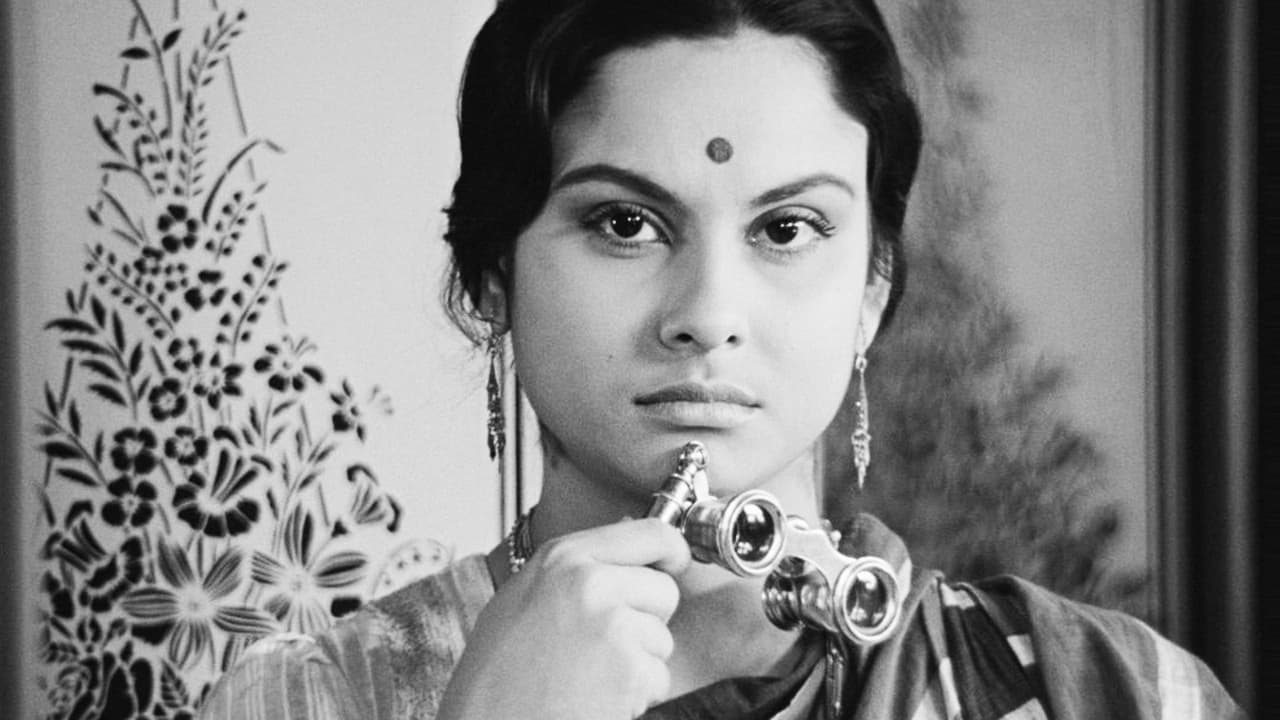

I've watched most of Ray's work and i can definitely say that this is the masterpiece a film lover can enjoy. Ray has full control over his camera & story telling and how can ever forget Madhubi's impeccable acting. You can easily see yourself dissolving in the story as time goes by. I adore music used by Ray in his films...it is pure, genuine & dynamic. I for the first time have seen & enjoyed a swing scene from a movie. A must watch for all the Cinéphile out there. Thanks
... View MoreThe lonely wife (Madhabi Mukherjee) of a newspaper editor (Sailen Mukherjee) falls in love with her visiting cousin-in-law (Soumitra Chatterjee), who shares her love for crafting literature.I make no secret of the fact that I simply do not care for Indian films. I can't really express why, but they do not appeal to me. With regard to Ray, I was not moved by the Apu trilogy. However, after seeing "The Music Room" (1958) I found there was at least one Indian film I liked.And now "Charulata". Much has been written about how this film has more of a Western sense to it, even invoking the name of Mozart. That may be so. But I also appreciate that at this point Ray had access to better equipment, apparently. Cinematography-wise, this is his best-looking film, and he experiments a little bit in a dreamlike way that I find very effective. We have the right balance -- not that low grade film India had in the past, and not the overly polished junk of Bollywood. This and "Music Room" may be the pinnacle of Indian film.
... View More"Charulata" (1964) was my first Ray, I think, some ten years ago. I haven't seen it since, but thanks to the Criterion Collection, it can now be viewed in beautiful high definition. They have, at this writing, released "Jalsaghar" (1958) and "Mahanagar" (1963) in addition to this (speaking of Blu-ray), and have thrown in "Kapurush" (1965) as an extra on the latter, and a DVD of later Ray. Not only this, but Artificial Eye, the European rights-holders, have already released some more not available on Criterion yet, "Nayak" (1966) and "Mahapurush" (1965).All I can remember from that magical first viewing is I fell in love. Not sure why, or how, but that the feeling was strong, and as if mutual. And true enough, Ray's cinema makes us learn about ourselves and others: music and song, writing and reading, seeing and not seeing. As if I had seen myself, not as I truly see myself but as I wish to have been seen, or even further than that, how I could have been seen.Ray frames many introductory shots through doorways. To lead us into her life? To observe the observer? To confine the confined? To hint at the escape? Ray has the one of a kind ability to make one feel present, like one's really there; nothing has to happen, and it's spellbinding. By the way, has the hypnotic first shot been taken by Jane Campion to her "Bright Star" (2009)?Books are introduced in the very beginning, as are the binoculars used by Charulata. Both motifs used in the sense of seeing afar, yet not seeing close. And when they finally do, they will discover themselves. The genius that he is, Ray is able to show inner turmoil in nature's violence (the wind), just as he did in "Jalsaghar". That moment of discovery is laden with great anxiety to bursts through so strongly one can feel it deep in the fibre one's being: the longing, the disappointment, the reconciliation.
... View MoreThe film is the masterpiece from Satyajit ray. Even he confessed that it was his best work. The film is obviously the slowest that I have ever seen but its beauty lies in the fact that it gradually develops the relationships and emotions which is very difficult to be filmed. The story revolves around a woman named Charulata who has an inherent talent of writing but is not able to make use of this. She finds it very difficult to pass her time. Brother of her husband comes to live with them and then she started to find solace in his company. How relationships gradually changed as the time passed is portrayed beautifully in this wonderful film from a master filmmaker.PROS: The best thing I found in the film was the acting by Charu. Her eyes said more than was required. Cinematography too was nice and noticeable. The development of affection between two people is the key strength here. The film is definitely slow paced but it certainly kept me interested every minute. The thing that I liked in the cinematography most was the very slow movement of the camera around the two people when they were talking. The story is good and normal but the way it was perceived by Ray and his power to display it is fantastic.MESSAGE: "Some things just happen. You cannot have control over them."VERDICT: "Most recommended Indian Film."
... View More